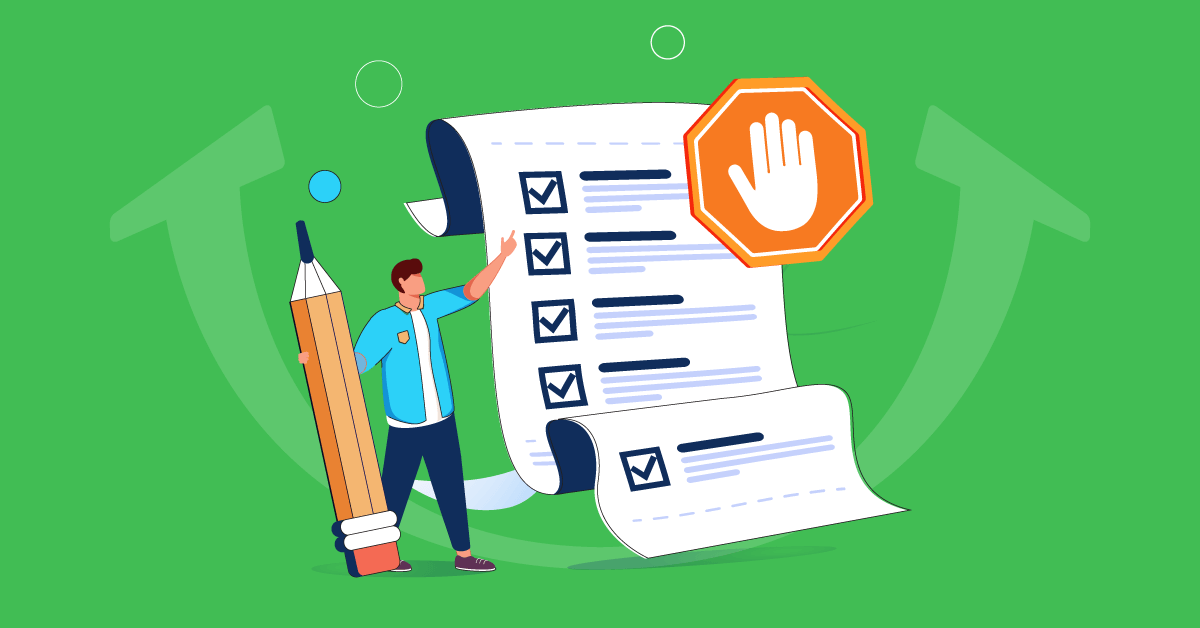When it comes to handling medical information, confidentiality is a priority. This is where the Health Insurance Portability and Accountability Act (HIPAA) comes in.
HIPAA compliance requirements set up standards to help healthcare companies and providers safeguard medical information. They help you ensure sensitive patient information remains confidential. Compliance with HIPAA rules is crucial, not only to protect patients’ privacy but also to avoid legal consequences.
In this article, we’ll talk about what HIPAA compliance looks like in the workplace (and why it matters). We’ll also cover the key components of a HIPAA compliance checklist and how to create one for your organization.
What is HIPAA?
The Health Insurance Portability and Accountability Act is a US federal law enacted in 1996 whose primary goal is to protect patients’ medical information privacy. It outlines best practices for keeping sensitive health information (like medical records) confidential.
HIPAA also establishes national standards for electronic healthcare transactions so that all medical information is handled securely and consistently across the country.

The benefits of HIPAA compliance at work
So who needs to be HIPAA compliant?
The law applies to healthcare providers, health plans, and any healthcare-related organization, including medical billing companies, telehealth services, and dental practices.
It also applies to subcontractors, business associates, and any other entity working in the healthcare field that handles or stores protected health information (or PHI).
Aside from the obvious legal implications, there are some compelling reasons to comply with HIPAA if you fall into one of these categories.
- Building patient trust: HIPAA-compliant companies are better positioned to safeguard patient information, so patients will feel more confident sharing their personal and medical information with a company that guarantees security.
- Avoiding fines: HIPAA violations can result in hefty financial penalties. For example, a company can face fines of up to $1.9 million per year for willfully neglecting HIPAA best practices. (More on potential violations below)
- Improving efficiency: HIPAA compliance safeguards can help companies identify administrative and technical areas where they can improve their operations and increase efficiency. For example, implementing electronic health records (EHRs) and secure messaging can streamline communication and reduce errors.
- Building better security overall: Building robust security systems to protect sensitive health data from cybercrime helps companies boost their data security across the board. Complying with HIPAA regulations also means companies meet the highest general data protection and privacy standards.
Now that you know the value of compliance, let’s take a look at what HIPAA violations commonly look like in the industry.
Examples of HIPAA violations (and how to avoid them)
There are lots of reasons HIPAA violations can occur. Here are some examples of why they happen and how you can prevent them.
Employee negligence
Employees who handle PHI may unintentionally violate HIPAA regulations by failing to safeguard the information properly. For instance, an employee may leave a patient’s medical record open on their desk or fail to password-protect an electronic file containing PHI.
To avoid these violations, offer regular HIPAA compliance training. It will help employees understand the importance of keeping patient information confidential. Creating courses on a compliance training software will also ensure employees know how to safely handle and transfer medical information.
Train employees on handling sensitive information
Create HIPAA compliance courses on TalentLMS.
The training platform that users consistently rank #1.
Theft
HIPAA violations can also occur when PHI is physically stolen. For example, a laptop containing PHI might be stolen from an employee’s car.
Avoid physical theft by putting in protocols like locking storage cabinets and installing alarms and surveillance systems.
Improper PHI disposal
PHI must be disposed of correctly so the information doesn’t end up in the wrong hands. For example, medical records tossed in the trash or recycling bin intact leave that information vulnerable to anyone with access to your company’s waste.
Ensure proper disposal by shredding or burning paper records and wiping electronic devices before getting rid of them.
Hacking
Hacking is another form of theft that might compromise your compliance. For instance, hackers might break into a database and download sensitive patient information.
Prevent hacking by implementing cybersecurity safeguards like firewalls, antivirus software, and intrusion detection systems.
Meet TalentLibrary™
A growing collection of ready-made courses that cover the skills
your teams need for success at work![]()

HIPAA compliance checklist
A HIPAA compliance checklist is essential for any organization that handles PHI. It will help you ensure you (and your employees) have taken all necessary precautions to guarantee patient privacy and data security.
Here are seven top actions to put on your company’s HIPAA compliance checklist:
Appoint a privacy officer
Start by appointing an officer in charge of privacy. This person will be the single touchpoint responsible for overseeing the organization’s compliance efforts.
Officially designating an individual to be a privacy officer means there’s one touchpoint for all your efforts and someone who is dedicated to making sure compliance at work is complete.
The privacy officer should know about HIPAA regulations and have the authority to enforce compliance.
Conduct a risk assessment
Organizations must conduct a risk assessment to identify potential vulnerabilities that could lead to a breach of PHI. The assessment should analyze physical, technical, and administrative safeguards within your organization.
You should also evaluate any business associates or third-party contractors you work with who may have access to sensitive data.
Implement technical safeguards
HIPAA requires organizations to put safeguards in place to ensure only those who should have access to electronic PHI (ePHI) can access it. They also act to help pinpoint any violations that do happen so they can be fixed right away.
Technical safeguards may include encryption, firewalls, antivirus software, and intrusion detection systems. Update these measures regularly to make sure they’re up-to-date with the latest development in data protection.
Implement administrative safeguards
Administrative safeguards refer to policies and procedures your organization puts in place to make sure you’re compliant.
Administrative safeguards are specific to your company, though they cover general HIPAA best practices. They may include employee training, security incident procedures, and contingency planning.
Provide HIPAA compliance training
Organizations must provide HIPAA compliance training to all employees who handle PHI. Training employees is essential—it gives them the knowledge and skills they need to do their jobs well. In this case, to keep your patients’ data secure and protect your organization.
The training can be specific to your workforce but should include an overview of HIPAA regulations, internal policies and procedures, and best practices for safeguarding PHI.
Boost HIPAA knowledge among your teams
Create compliance training in no time with TalentLMS.
Easy to set up, easy to use, easy to customize.
Develop an internal HIPAA audit checklist
Make sure you’re meeting all your compliance goals by developing a checklist to help you review them. Since each organization is different, its compliance obligations are also different. An internal checklist is tailored to your specific commitments and helps you rest assured you’re meeting them all.
The checklist should include all the requirements outlined in the HIPAA privacy rule and security rule, as well as any additional state or industry-specific regulations.
Review and update the HIPAA compliance checklist regularly
HIPAA regulations are subject to change, so regularly review your organization’s compliance checklist and bring it up to standard.
If compliance requirements or procedures change, note them immediately and update the list. Regular reviews will ensure that the organization complies with current regulations and that new risks are promptly addressed.
HIPAA compliance will help you build a stronger company
Following HIPAA compliance guidelines keeps patient information safe and helps strengthen your organization.
When you earn the trust of the patients whose data you handle, you build solid relationships that will support your business going forward. You also build a strong reputation in your industry for taking top precautions and avoiding risks and danger.
With a solid reputation, your company can do business confidently and keep ahead of the competition. This is why a HIPAA compliance checklist should always be taken carefully into consideration.
| Tags: Compliance Training,Employee Training



